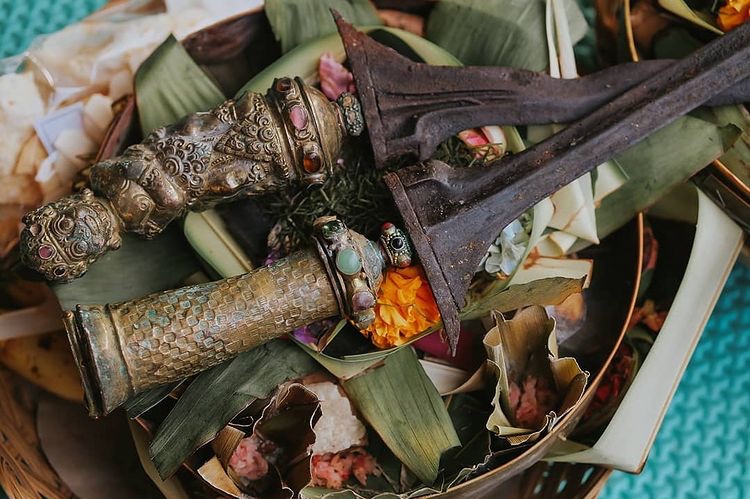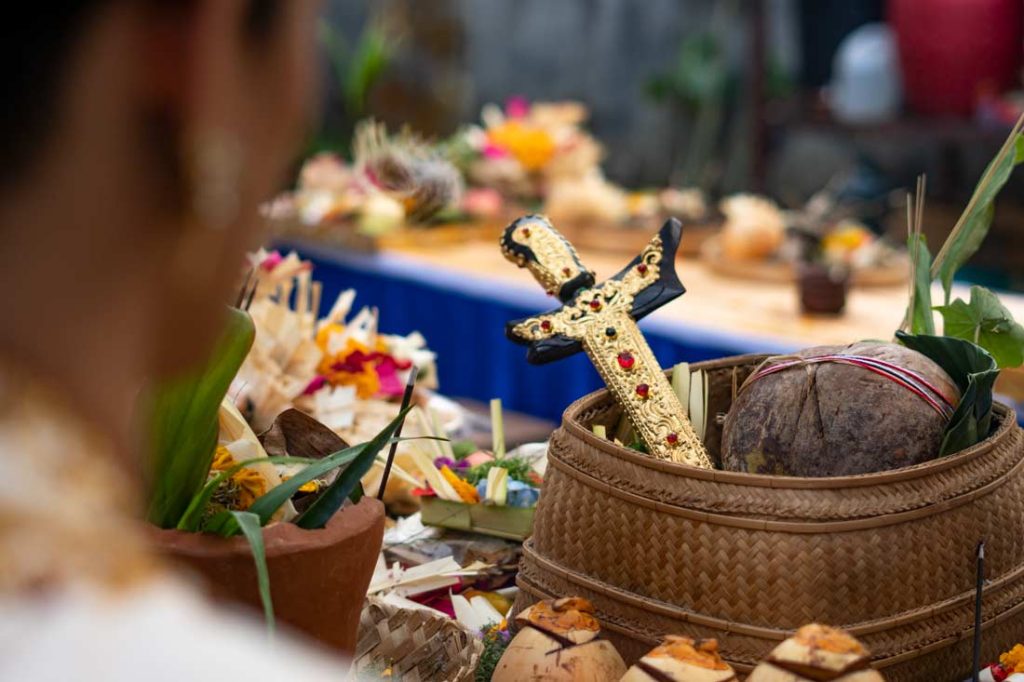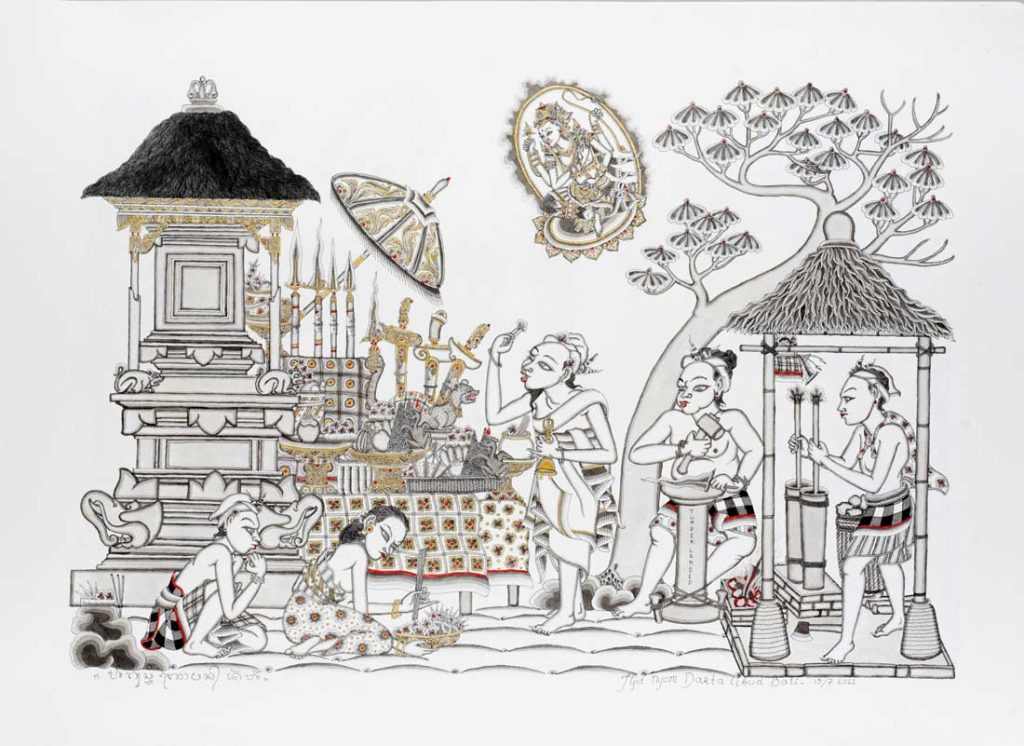If you find yourself in Bali on the day called Tumpek Landep, you will be surprised to see offerings put on cars, motorbikes, machines and metal instruments of all types. For which purpose, you will certainly wonder? So let us explain it to you.

Tumpek Landep is the day dedicated to metal in the 210-day traditional pawukon calendar of Bali — it should however be noted that there is another calendar system, that of the Saka year, of Indian origin, which has 12 months of 30 days.
So, this “anniversary” occurs once every 210 days. It comes two weeks after Saraswati, the day dedicated to Knowledge and Awareness, through which humans became “fully humans” by prohibiting incest and inventing time [Read Hari Saraswati for more information]. One of the first signs of human knowledge is indeed, just after the creation of the calendar, the discovery of fire and the invention of metal technology. Hence of weapons. This is what is celebrated on Tumpek Landep, landep meaning sharp in Balinese. The weapons are not simply objects though. They evoke ancestors and thus carry the family’s mystical, trans-generational power. In times of crisis, they might be taken out and “purified” and “empowered” (dipasupati), hence becoming ready for use.

Tumpek Landep is one of six ‘Tumpek’ days, each corresponding to a basic human activity: Tumpek Landep, addressed to metal, Tumpek Wariga, addressed to the vegetal world, Tumpek Kuningan, addressed to the ancestors, Tumpek Krulut, addressed to love and enjoyment,Tumpek Kandang, addressed to the animal world, and Tumpek Wayang, addressed to the wayang puppet theater, which has the ability to ward off Kala, the children “eater”. The Tumpek days occur once every 35 days, on the crossing of the day Saturday with the day Kliwon of the five-day week. The Tumpek Landep is the first to come up on the calendar cycle.
Let us see what people do on Tumpek Landep, by referring to the illustration below by Nyoman Gusti Darta:

The illustration shows the situation in a smith’s house on Tumpek Landep days. In the higher part of the image, the god Siwa the Supreme hovers symbolically over the scene. In the left part of the image one sees a “cabinet” altar (gedongan). This is where the sacred weapons are kept, belonging to the smith’s family. On Tumpek Landep day, those weapons are taken out and presented with offerings.
One sees five spears and three keris (daggers). A priest is sprinkling holy water (toya ning) to purify them. Two smiths are shown on the right, one using a hammer to shape a piece of iron, and the other one, to the right, is activating a penglamusan below to keep the fire strong enough to redden the pieces of iron he is moulding.
A man and woman couple, the owners of the compound, are shown praying on the ground, with a segehan offering addressed to the earthly rencang “companions” of the gods.
For further information on Balinese Hindu religious calendars and raites see: “Time, Rites and Festivals”(2013), by Gusti Nyoman Darta, Jean Couteau and Georges Breguet.
Tumpek Landep is a big part of the Hindu annual rituals, and once again proves how unique this island really is. Learn more about Bali’s Biggest Celebrations here.









